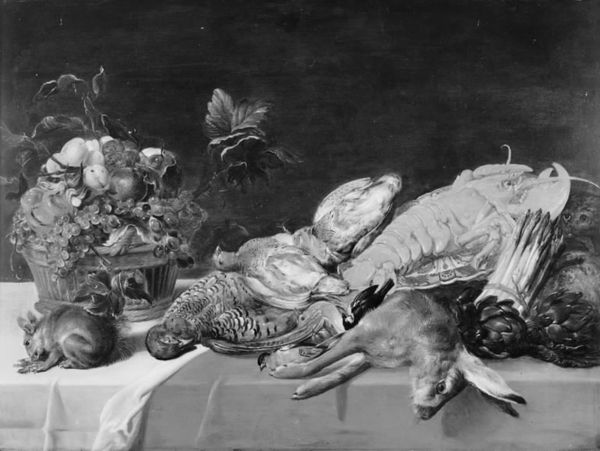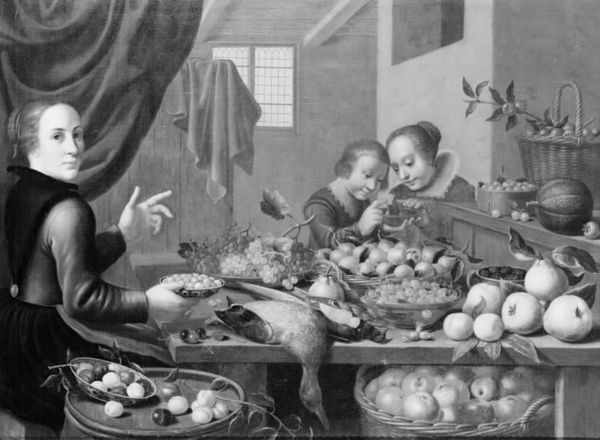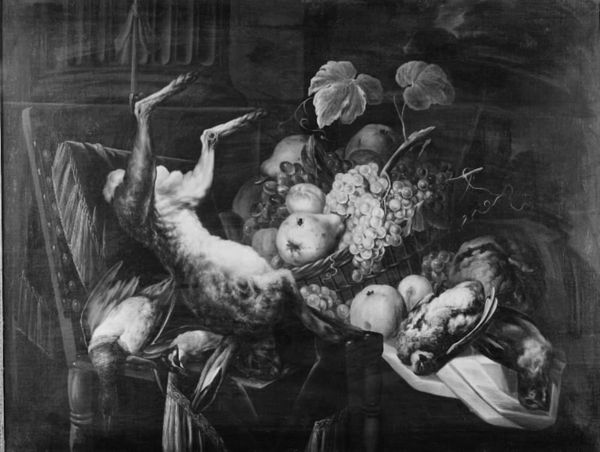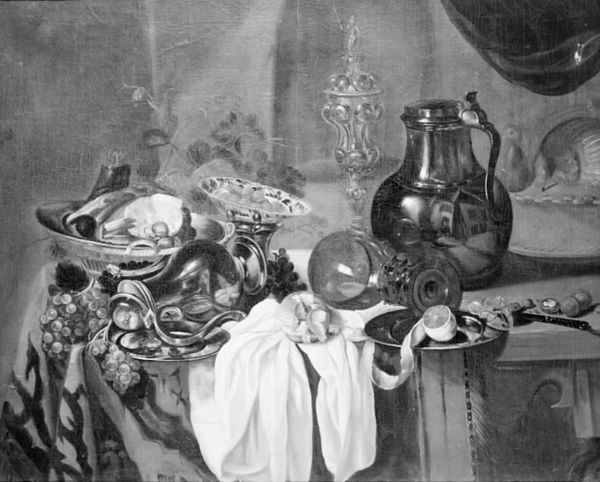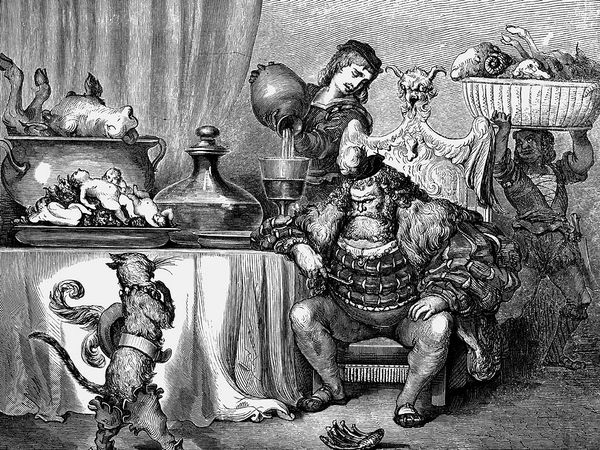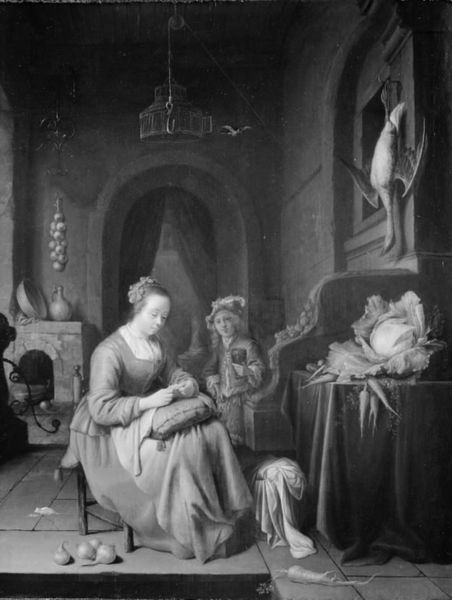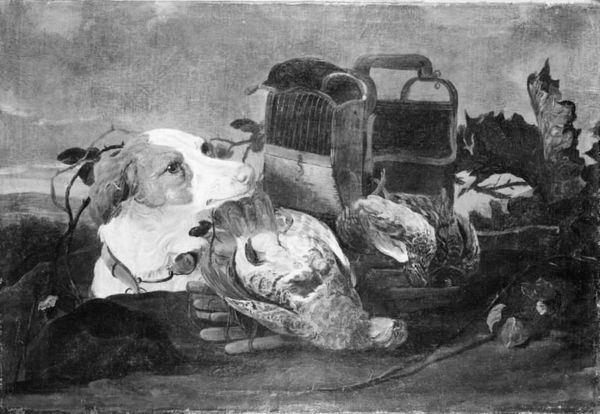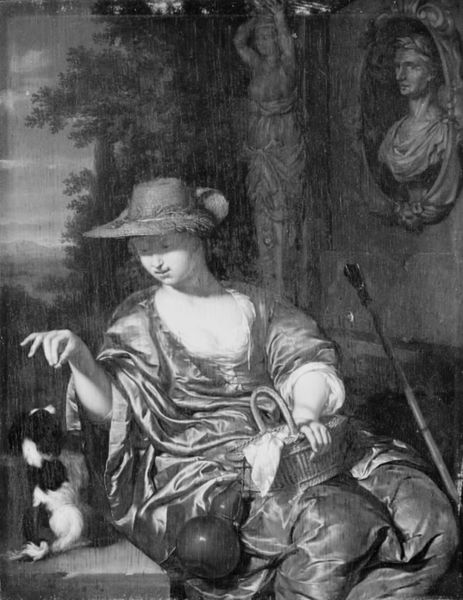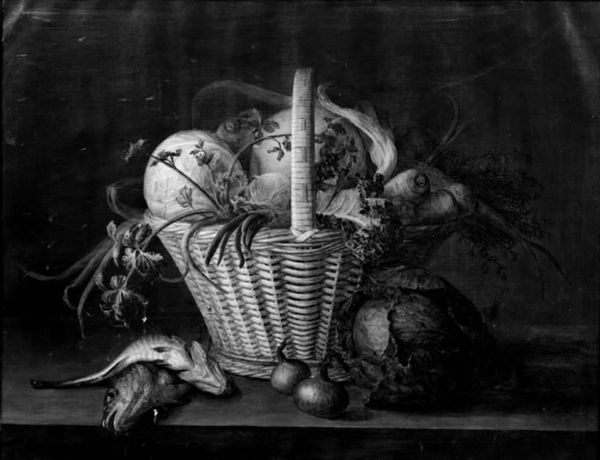
A Cook and a Kitchen Maid with the Provisions of the Kitchen 1732
0:00
0:00
painting, oil-paint
#
portrait
#
baroque
#
portrait
#
painting
#
oil-paint
#
group-portraits
#
genre-painting
Dimensions: 122 cm (height) x 219 cm (width) (Netto)
Curator: Anton Friedrich Harms created this oil painting in 1732, now held in the Statens Museum for Kunst. It’s titled, "A Cook and a Kitchen Maid with the Provisions of the Kitchen." Quite a mouthful! Editor: It is! And quite an eyeful! It has an incredible density, doesn't it? All that game hanging there—almost overwhelms the figures of the cook and the maid. I immediately think of the sheer labor involved in sourcing, preparing, and serving all of this. Curator: That’s a great point. It definitely speaks to the socio-economic status of the household it represents. This isn’t just a meal; it’s a display of wealth and the abundance afforded by exploiting resources and labour. Editor: Exactly! Look at the surfaces and textures, though—the slick shine of the fish, the rough feathers of the birds. I am particularly interested in the juxtaposition between these elements with how the artist rendered the fabric around the kitchen maid's shoulder. Curator: The painting is clearly informed by the conventions of Baroque portraiture while depicting everyday life, but it definitely reflects a very specific experience. The painting participates in a power dynamic, where the wealthy patron is being entertained and having their status reinforced by viewing this depiction of staff. Editor: Absolutely, but it’s also about the labor of producing this painting itself. The artist uses specific techniques, carefully constructed in layers and a dedication of labor for sure! Think of the cost involved! Curator: That tension is central to these genre scenes—the spectacle of the everyday used to subtly uphold social hierarchies. Do you notice how the dog at the cook's side almost serves as an extension of his servitude? Even the animals participate. Editor: The material culture on display tells its own story of consumption and the vast social distance between those who labour and those who consume. So the viewer’s participation reinforces that reality as well, with implications far beyond the kitchen. Curator: This peek into an 18th-century kitchen encourages a view into social strata during this period. The art provides a complex portrait that is about far more than ingredients or dinner plans. Editor: It does more than document, it shows the hard, tangible aspects of daily labour and that should, ideally, move the viewer to think critically about material production in any setting.
Comments
No comments
Be the first to comment and join the conversation on the ultimate creative platform.

